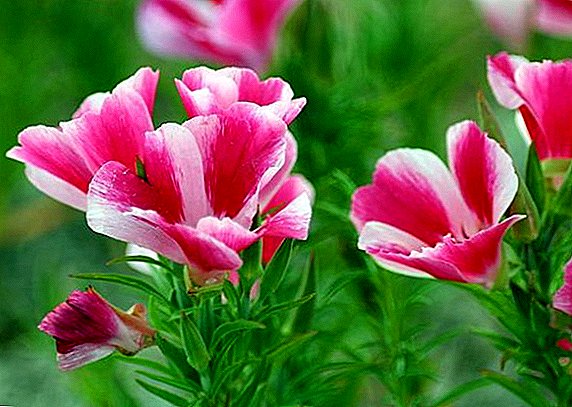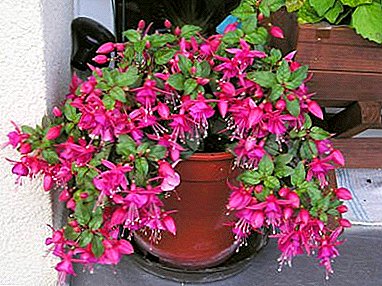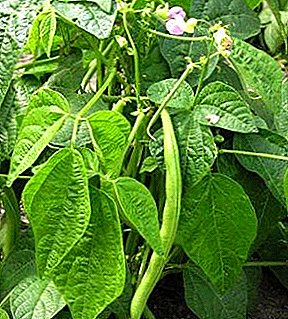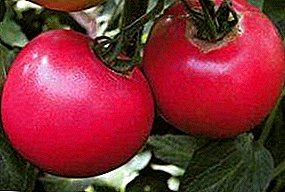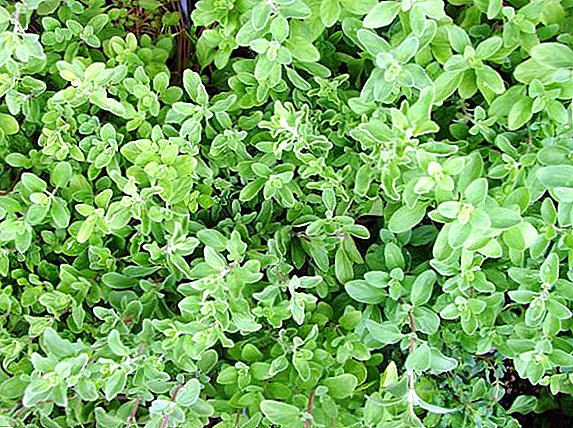 Seasoning, ointment, tea, oil - that only do not make of marjoram. Spice is famous all over the world, and hardly any family dinner will go without it. They began to use it tens of centuries ago. Moreover, the range of application as it was, and remains very large. Still marjoram used to treat many diseases, it also found its application in cosmetology and in other directions. But, despite the healing properties of marjoram, it has its own contraindications.
Seasoning, ointment, tea, oil - that only do not make of marjoram. Spice is famous all over the world, and hardly any family dinner will go without it. They began to use it tens of centuries ago. Moreover, the range of application as it was, and remains very large. Still marjoram used to treat many diseases, it also found its application in cosmetology and in other directions. But, despite the healing properties of marjoram, it has its own contraindications.
Seasoning marjoram: chemical composition and nutritional value
The stems and leaves of young marjoram contain up to 3.5% of essential oil, its smell is similar to that of cardamom and thyme. And the composition of the ether includes pinene, borneol, phenols, tannins and other compounds. The leading components of the oil - terpenes. But the main carrier of the fragrance was never found! Essential oil reaches its maximum concentration during flowering. The pronounced smell beckons bees. Marjoram is rich not only with essential oil.
 The leaves of the plant contain macro - and micronutrients: potassium, iron, zinc, phosphorus, silicon other.
The leaves of the plant contain macro - and micronutrients: potassium, iron, zinc, phosphorus, silicon other.
Rutin (up to 0.13%), vitamin C (up to 0.45%), provitamin A (up to 0.006%) are found in the marjoram's stalks. The chemical composition of this plant is supplemented with tannins, pectins, pentosans, which perform protective functions.
Nutritional value of spices (per 100 g): kcal - 227; sugar - 4.1 g; fats - 7.0 g; fatty acids - 0.5 g; sodium - 0.08 g
Did you know? In the XYI century, marjoram was used to add freshness after washing hands.
What is useful marjoram, the use of spices in traditional medicine
The ancient Greeks helped to reveal the healing properties of the marjoram. They found that the leaves of this plant help in the digestion of fatty foods, prevent heartburn, belching and indigestion. Legionnaires elixir gave courage and fighting spirit.
The oil extracted from the plant was used in the treatment of colds, headaches, and nervous disorders. In the future, essential oil of marjoram began to be used in the perfume industry.
 Marjoram found widespread use in traditional medicine. It is used for convulsions, migraines, menstrual pain, as a diuretic, depression, diabetes, inflammatory diseases of the oral cavity. It has a positive effect in insomnia. Marjoram ointment is recommended for children in the treatment of rhinitis, in case of dislocations, sprains, abscesses, and rheumatic diseases.
Marjoram found widespread use in traditional medicine. It is used for convulsions, migraines, menstrual pain, as a diuretic, depression, diabetes, inflammatory diseases of the oral cavity. It has a positive effect in insomnia. Marjoram ointment is recommended for children in the treatment of rhinitis, in case of dislocations, sprains, abscesses, and rheumatic diseases.
The organic acids in its composition make marjoram a good antiseptic. To maintain immunity and prevent cancer, it is recommended to make an infusion of dried marjoram leaves. One tablespoon of herbs pour 250 ml of boiling water, insist no more than five minutes, then strain. This decoction is recommended to take one or two times a day. Naturally, the use of marjoram in traditional medicine exceeds its use in pharmacology.
Did you know? American scientists proved that marjoram oil has a good anti-bacterial effect.
How marjoram used by beauticians
This fragrant plant is used in a wide variety of cosmetic forms: fresh, as an essential oil, in the form of an extract. Extract and essential oil from marjoram can be found in hair care products, lotions and creams.
This is a popular component of soap and shower gels. Shampoos, balms and hair masks, containing extract or oil, stimulate the blood circulation of the scalp, make hair shine, improve their growth and prevent hair loss. You can add a few drops of essential oil to shampoo yourself. It helps fight dandruff and some skin infections of the head.
 This supplement is a powerful antiseptic that softens the skin and eliminates irritation. Volatile phenolic compounds in the composition of this plant explain this effect. Acne will help remove cosmetics, which includes marjoram leaf extract.
This supplement is a powerful antiseptic that softens the skin and eliminates irritation. Volatile phenolic compounds in the composition of this plant explain this effect. Acne will help remove cosmetics, which includes marjoram leaf extract.
To make a bath to moisten your hands, you need to take two tablespoons of powdered crushed marjoram and pour a liter of hot boiled water, let it brew for about half an hour, then strain. Soar in a hand bath can be no more than twenty minutes. Of course, marjoram oil has healing properties, but if you blend with other oils, you can achieve great effects.
Marjoram and Dentistry
This plant is applied everywhere. Found marjoram its place in dentistry. Due to its healing properties, it has anti-inflammatory and analgesic effect. With daily use of marjoram, it contributes to the strengthening of tooth enamel and gums. For toothaches, a couple of marjoram leaves will help soothe the inflamed area.
In addition, tea from marjoram maintains the whiteness of the teeth in its natural form. When using marjoram at the age of growth of molars in children, it will help to properly form and strengthen growing teeth. For the treatment of inflammatory processes of the oral cavity, mouth can be poured with tea from marjoram. To make it brew 30 g of dried grass in 1 liter of water. After twenty minutes, strain and can start rinsing.
Important! When driving a car is best to refrain from increased use of marjoram, as this may cause drowsiness.
Use of marjoram in cooking
 Marjoram has received its most common use in cooking. It is used in almost all cuisines of the world. Especially loved him in France for its unique flavor. Ideal with meat and fish dishes, added to a variety of soups and stews.
Marjoram has received its most common use in cooking. It is used in almost all cuisines of the world. Especially loved him in France for its unique flavor. Ideal with meat and fish dishes, added to a variety of soups and stews.
It is also an integral part of most sauces and salad dressings. Actively used in sausage production, for which he received the nickname "sausage grass". They like to use the grass in brewing and winemaking.
Also marjoram is included in the popular Caucasian seasoning hop-suneli. Many housewives prefer to add it to a variety of pickles. Marjoram perfectly replaces pepper and salt, which can help people on salt-free diets. If you are cooking pizza and found that there is no oregano for the sauce, you can safely replace it with marjoram, because they are very similar in taste. It will be easier to name those appetizers and dishes to which marjoram does not fit than those with which it is perfectly combined.
Important! During pregnancy, it is necessary not only to refrain from taking marjoram as food, but also to stop using essential oils with its content for this period.
Preparation of medical raw materials
Medical raw materials are harvested in two stages: early summer and autumn. It is at this moment that such a herb as marjoram reaches its peak of healing properties. The plant is cut before flowering, so that in the fall you can once again harvest. You can leave about 8 cm of the stem.
 In the fall, the spice is completely removed from the soil, washed, tied in bunches, which are hung in a dark room. After the marjoram dries, it is picked, sifting away the damaged leaves, again tied and hung up for final drying in a well-ventilated room.
In the fall, the spice is completely removed from the soil, washed, tied in bunches, which are hung in a dark room. After the marjoram dries, it is picked, sifting away the damaged leaves, again tied and hung up for final drying in a well-ventilated room.
Also freezing of marjoram is practiced. When drying marjoram in the oven, first maintain a temperature of 40 degrees, after raising by 10 degrees. To check readiness, squeeze the leaves in your hand, they should easily crumble and produce a characteristic crunch.
Leaves freeze in water and then apply as needed. When harvesting raw materials are used only the leaves, the stems do not take, as they are quite bitter. The finished, dried product can be stored for up to three years.
Contraindications to use marjoram
Despite this variety of use, spice has its contraindications to the use. Eating marjoram in food is not recommended for women during pregnancy, especially in the early stages, due to the content of phytoestrogen hormones. Also not recommended for sufferers of increased blood clotting and vein thrombosis. Spice is strictly contraindicated for children under five years old, and marjoram oil should not be consumed.
 Even if you have no contraindications and marked intolerance to this spice, you need to limit its use. Too much marjoram can cause headaches, and in some cases sedative effects. Also, people who have low blood pressure, it is necessary to carefully apply marjoram oil and tea for treatment.
Even if you have no contraindications and marked intolerance to this spice, you need to limit its use. Too much marjoram can cause headaches, and in some cases sedative effects. Also, people who have low blood pressure, it is necessary to carefully apply marjoram oil and tea for treatment.


